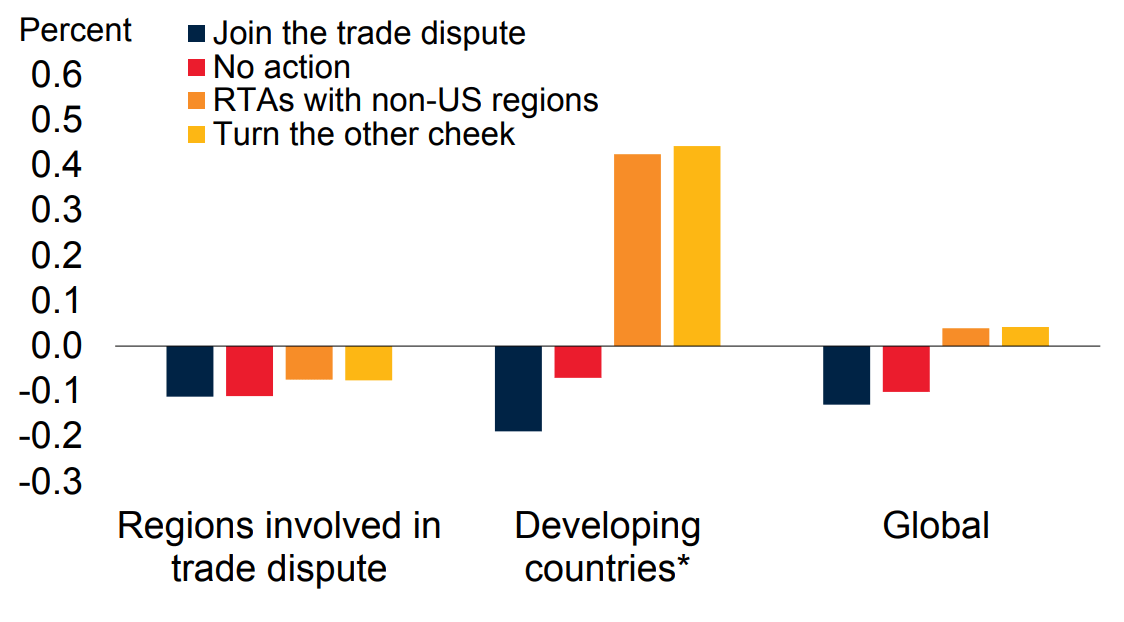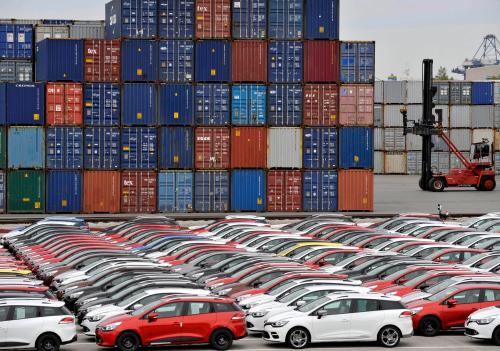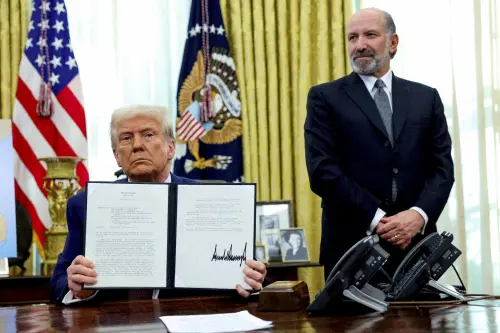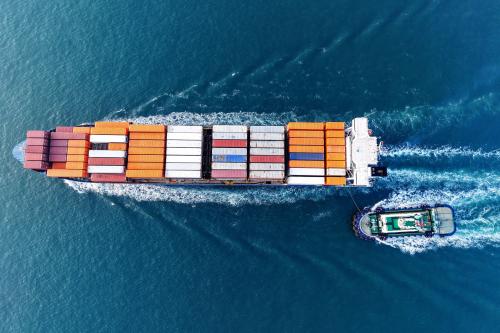If the current trade tensions between the United States and its major trade partners, especially China, escalate into a full-blown trade war, what should developing countries do? In a recent paper, my co-authors and I try to answer this question by using a global, general-equilibrium model to first simulate a major increase in U.S. tariffs (up to Smoot-Hawley levels of the 1930s) and a retaliation in kind by China, the EU, Canada, Mexico, and Japan. We then explore four possible options for developing countries (except China and Mexico):
- Join the trade war
- Do nothing
- Sign regional trade agreements (RTAs) with all countries outside the U.S
- “Turn the other cheek”—option 3 plus eliminate all tariffs on imports from the U.S.
Before discussing the results, some comments on the modeling choices are in order. First, the simulated, high (nearly 30 percent) tariffs by the U.S. are consistent with the tariffs imposed since the beginning of this year on aluminum, steel, and other imports from China. These tariffs rates are, in turn, similar to the “Column 2 tariffs” currently applied to Cuba and North Korea. We assume the U.S. imposes Column 2 tariffs on all countries. The retaliation by the major trading partners is, however, restricted to imports from the U.S. This creates opportunities for developing countries to export products that were previously imported from the U.S. Second, the option of developing countries’ signing regional trade agreements with non-U.S. states stems from the fact that there has been a proliferation of such agreements since 2017, including among G-20 countries, the Comprehensive and Progressive Agreement for Trans-Pacific Partnership (CPTPP), and the African Continental Free Trade Area (CFTA). Finally, the multi-country, multi-sector general-equilibrium model captures only the static gains and losses from the trade war and developing country responses. It does not take into account the effects of a trade war on investment (through increased uncertainty) and hence on long-term growth. Also, since most developing countries are small, open economies, we assume that there is no retaliation from their actions.
In terms of the results for the four options for developing countries, the worst is to join the trade war. The higher tariffs will make it harder for these countries to export and recoup the terms of trade losses from the trade war. Relative to the “no-war” scenario, developing countries will suffer a GDP loss of 0.2 percent and export loss of 0.3 percent by joining the trade war (see Figure 1). These costs are double what they would face by doing nothing. By contrast, if they sign regional trading arrangements with all countries outside the U.S., developing countries could reap significant benefits and mitigate the costs of the trade war: GDP could rise by 0.4 percent and exports by 1.7 percent relative to the no-war situation. If they were to in addition unilaterally eliminate tariffs on imports from the U.S., i.e., turn the other cheek, these gains would be even higher, especially for Latin American and Caribbean countries that are closely linked to U.S. markets. The latter two options enable developing countries to take advantage of the market opportunities created by the reduction of exports from the U.S. to its major trading partners.
Figure 1. Alternative strategies for developing countries: Impact on GDP

While these results emerge from one model, they represent a direction for policy that is likely to be robust, at least qualitatively, to further refinements and other modeling frameworks. The point is that trade wars between large countries create openings for non-warring countries to increase exports to the combatants. The best policy response is to take advantage of those opportunities.
Needless to say, “turning the other cheek” may not always be politically acceptable. In fact, there may be strong political pressure to retaliate and raise tariffs against the United States, say. The paper shows that yielding to such pressure has costs, both directly and in terms of forgone opportunities to reap the benefits from a cooperative strategy.
The Brookings Institution is committed to quality, independence, and impact.
We are supported by a diverse array of funders. In line with our values and policies, each Brookings publication represents the sole views of its author(s).





Commentary
How to fight a trade war: Turn the other cheek
November 13, 2018